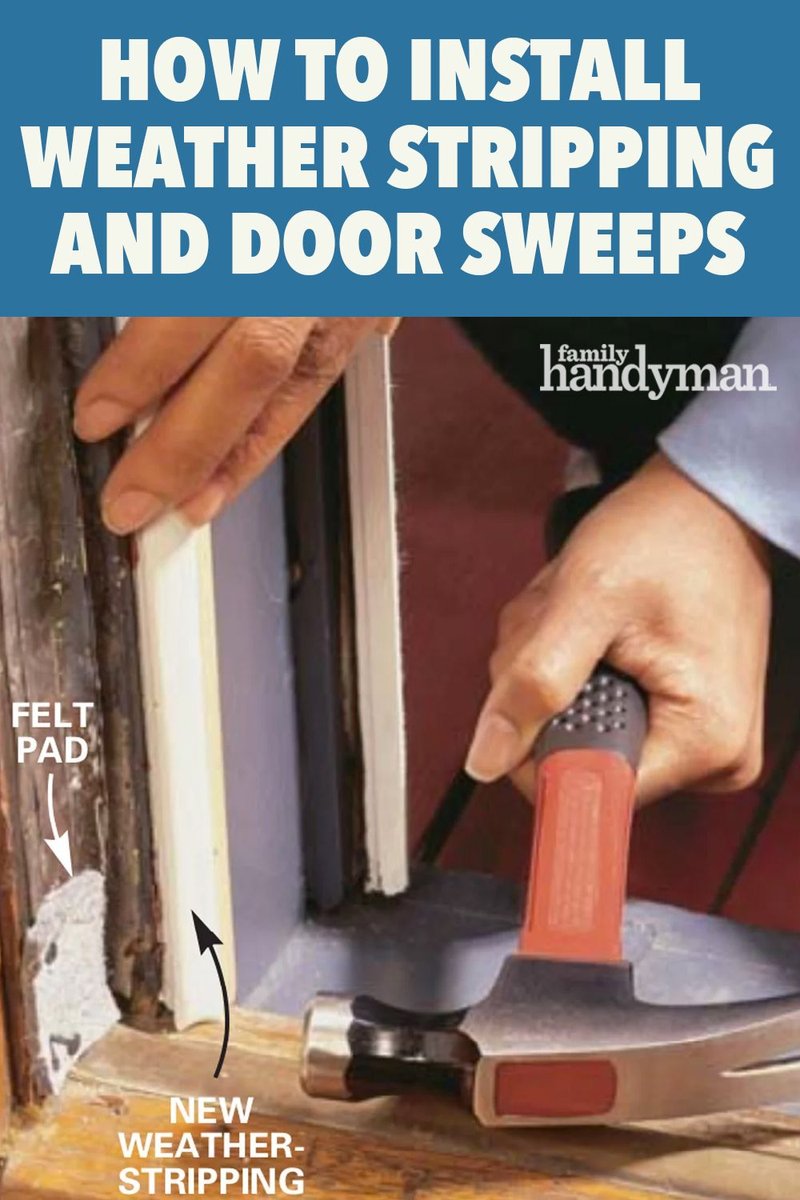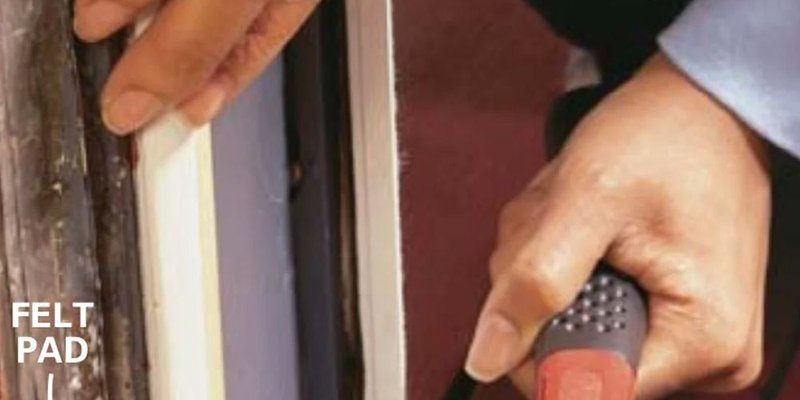
Think of weatherstripping as the cozy scarf your door needs to stay snug against the cold (or heat, or noise, or dust). But when you’re dealing with an *uneven* steel frame, it’s more like wrapping a scarf around a lumpy snowman—you can’t just do it once and walk away. Let me walk you through the details, step by step, so you end up with a door that actually closes tight and keeps your home comfortable all year.
Why Weatherstripping Matters for Steel Doors
When people think about drafts or leaks, wooden doors come to mind. But steel doors are just as prone to letting in air—sometimes even more so if the frame is bent, warped, or just plain old. The consequences? Higher energy bills, a less comfortable home, and sometimes even water leaks in a storm. Honestly, even a small gap can turn your cozy living room into a wind tunnel.
Weatherstripping acts as a barrier, blocking outside air from sneaking in and stopping your heated or cooled air from escaping. It’s not only about comfort—it’s also about saving money over time. Especially with steel doors, which don’t swell and shrink like wood, you might think leaks wouldn’t be a problem. But if the frame isn’t even, there’s always going to be a route for air to travel.
Another important thing: modern weatherstripping brands like Frost King or MD Building Products offer a lot of options specifically designed for steel door frames. These kits usually come with strong adhesives or magnetic strips that play nicely with metal, plus flexible seals that can handle an uneven surface far better than the old-school stuff.
What You’ll Need to Install Weatherstripping
Getting prepped is half the work. Before you even start measuring, gather these essentials:
- New weatherstripping kit (choose a high-quality brand like Pemko, MD, or Frost King)
- Strong scissors or utility knife
- Rubbing alcohol or a degreaser (for cleaning the metal)
- Measuring tape
- Pencil or marker
- Screwdriver (if your door uses screw-on stripping)
- Strong adhesive, if your kit doesn’t include it
- Optional: a hair dryer (for making the strip more flexible)
Honestly, it’s tempting to grab whatever foam strip is on sale, but with steel door frames—especially uneven ones—quality makes a huge difference. Flexible magnetic weatherstripping or high-density foam with a tough backing tends to work best. And if you want a really solid seal, look for stripping that presses against the door as it closes, not just adhesive-backed stuff that sits in the gap.
How To Diagnose an Uneven Steel Door Frame
Before you start slapping on new weatherstripping, you need to figure out where the real trouble spots are. Steel door frames, especially in older homes or garages, can shift over time. Maybe the hinges sagged, or someone forced the door one too many times. Here’s how you can check for unevenness:
- Close the door and look: Is there more daylight along one side or at the corners? That’s a classic sign the frame isn’t even.
- Run your hand along the edges: If you feel varying gaps or drafts, take note.
- Use a dollar bill: Place it in the closed door gap and pull. If it slides out easily in some spots and is tighter in others, the frame’s uneven.
- Bonus: Check the latch and strike plate. If the latch sticks or doesn’t catch easily, the frame is probably out of alignment.
Jot down which parts of the frame have bigger gaps or are out of square. This info’s important. You’ll be customizing your weatherstripping to match those trouble spots, not just applying a one-size-fits-all fix.
Preparing Your Steel Door Frame
A little prep work goes a long way. Steel, unlike wood, can be a magnet for dust, grime, or even a bit of rust. For weatherstripping to stick and seal, the surface needs to be spotless. Here’s what I do:
First, open the door and give the frame a good once-over. Wipe it down with a dry cloth to get rid of loose dirt. Next, use some rubbing alcohol (or a dedicated metal cleaner) on a rag and scrub the area where you’ll be installing the new stripping. This gets rid of grease, old adhesives, and anything else that could keep the strip from sticking.
Strong adhesives love a clean, dry surface. If your steel frame is damp or oily, the weatherstripping will peel off in no time.
If there’s stubborn rust, gently sand it away with fine sandpaper, then wipe clean. You want the area smooth so the strip forms a tight seal. Let it dry completely before moving on—if there’s moisture left, the adhesive may bubble or fail.
Step-By-Step: Installing Weatherstripping On An Uneven Steel Frame
Here’s the part where you solve the draft problem for good. Ready to start?
- Measure and Cut: Hold the weatherstripping against the door frame and mark the lengths you need for the top and both sides. Cut the pieces with scissors or a utility knife. Always cut a fraction long—better to trim, not to stretch.
- Test Fit, Especially in Uneven Areas: Before you peel the adhesive backing, hold the strips against the frame. In spots where the gap is wider, you might need to double up or use thicker weatherstripping. For narrow spots, trim the strip so the door won’t stick.
- Apply the Weatherstripping: Peel off the backing a few inches at a time, not all at once. Press the strip firmly into place as you go, making sure to keep it straight. Start at one end and work your way around the edges of the frame.
- Adjust for Unevenness: In spots with extra-large gaps, add a second layer or use a small piece of thicker foam behind the strip. For tight areas, compress the strip or thin it with scissors. If your kit uses screws, tighten them just enough so the strip touches the door but doesn’t crush flat.
- Seal the Corners: Where the top and sides meet, press the strips tightly together so there’s no little triangle for air to sneak through. Some brands include corner pads—use them if you have them.
- Test the Door: Close the door. It should latch easily and you shouldn’t feel a draft. If the door’s hard to close, you’ve added too much thickness—go back and trim those spots.
You might be wondering: *What if the unevenness is extreme, like a big bend in the frame?* In that case, flexible “bulb” weatherstripping or magnetic seal kits work best. They adapt shape as the door closes, giving you a seal even on rough or gappy frames.
Tips for Troubleshooting Common Problems
Even if you follow every step, weird issues can pop up. Let me explain a few fixes I’ve found helpful:
- Adhesive won’t stick: Go back and check if the steel is really clean and dry. If the weather’s cold, warm the frame (and the strip) with a hair dryer to help the glue grip.
- Gaps still let in air: Some uneven frames need a little extra creativity. Try layering thinner foam, or use a thicker-diameter strip just in the gappy section. Magnetic kits are great here—they’ll snap to the steel and form a consistent seal.
- Door won’t latch: If your door suddenly needs muscle to close, you’ve overdone it. Remove one layer or trim the strip until the latch clicks without effort.
- Peeling after a week: This usually means the adhesive didn’t bond well or the weatherstripping got pulled by repeated slamming. Press the strip back down with a roller or your hands, and if necessary, beef up the adhesive with a few dabs of superglue.
Here’s the thing: troubleshooting is normal. Every door and frame is a little different, and steel isn’t as forgiving as wood. Just keep making small adjustments until the door closes with a “whoosh” and no drag.
Comparing Weatherstripping Types for Steel Doors
It’s easy to get overwhelmed by all the different weatherstripping kits in the hardware aisle. Here’s a quick rundown of what works best on uneven steel door frames:
- Magnetic weatherstripping: These are like the flexible seals on your fridge door—they grab onto the steel and form a tight barrier. Great for uneven frames.
- Foam tape (high-density): This is the classic stick-on kind. It’s cheap and easy, but for big gaps, you’ll need the thickest version. Some brands offer “closed-cell” foam, which lasts longer.
- Bulb or “tube” weatherstripping: These are round strips that squish as the door closes. They’re flexible, fill irregular spaces, and rarely get stuck or jam the door.
- V-seal or V-strip: Flexible plastic that hugs the door edge. Works well for small, consistent gaps but struggles with big, uneven ones.
If you want my opinion: for really uneven steel frames, go with magnetic or bulb-type stripping from a good brand. Foam tape can work if the gap isn’t huge or oddly shaped, but it’s not as durable as the other options.
When To Call in a Pro (Or Try an Alternative)
Sometimes, a steel door frame is so out of whack that no amount of weatherstripping will make it perfect. If the gaps are more than half an inch wide, or the door doesn’t close right even after minor tweaks, you might need a professional.
A pro can:
- Re-align or shim the frame
- Replace warped parts
- Install commercial-grade weatherproofing kits
Another smart alternative is using a door sweep at the bottom or a full universal gasket kit for extra sealing. These offer a second line of defense and are pretty forgiving for uneven surfaces.
And if you’re the DIY type, you can always try a little caulk in corners where the stripping won’t reach or an extra layer of foam in the worst spots. Just don’t force the door closed—you want a smooth, comfortable fit.
Keep Your Weatherstripping Working Long-Term
Weatherstripping isn’t a set-it-and-forget-it thing, especially on steel doors that can flex with temperature changes. Check your seal every season or after a big storm. Here’s what works for me:
- Inspect regularly: Run your hand along the edges every few months. If you feel a draft or see light, it’s time to repair or replace a section.
- Clean the strips: Dust and grime weaken adhesive and rubber. Wipe with a damp cloth to keep the seal flexible.
- Don’t slam the door: That’s the quickest way to peel off your hard work. Close the door gently so the strip lasts longer.
- Keep spare strips handy: If you have leftovers, stash them for future touch-ups—you’ll save yourself a trip to the store.
Steel doors are tough, but the weatherstripping around them needs a little care if you want it to keep working year after year.
Final Thoughts: A Snug Door, Done Right
Tackling weatherstripping on an uneven steel door frame can feel like fixing a leaky tent in a windstorm—frustrating at first, but so satisfying when you get it right. Take your time choosing the best weatherstripping type for your situation, prep the frame, and troubleshoot as you go. Whether you use a trusted brand like Frost King or a universal magnetic kit, the goal’s the same: a door that finally closes tight, keeps the elements out, and doesn’t make you shiver every time the wind howls.
A little effort now means a more comfortable, energy-efficient home later. And honestly, once you seal that last gap, you’ll wonder why you ever put up with those sneaky drafts in the first place.
